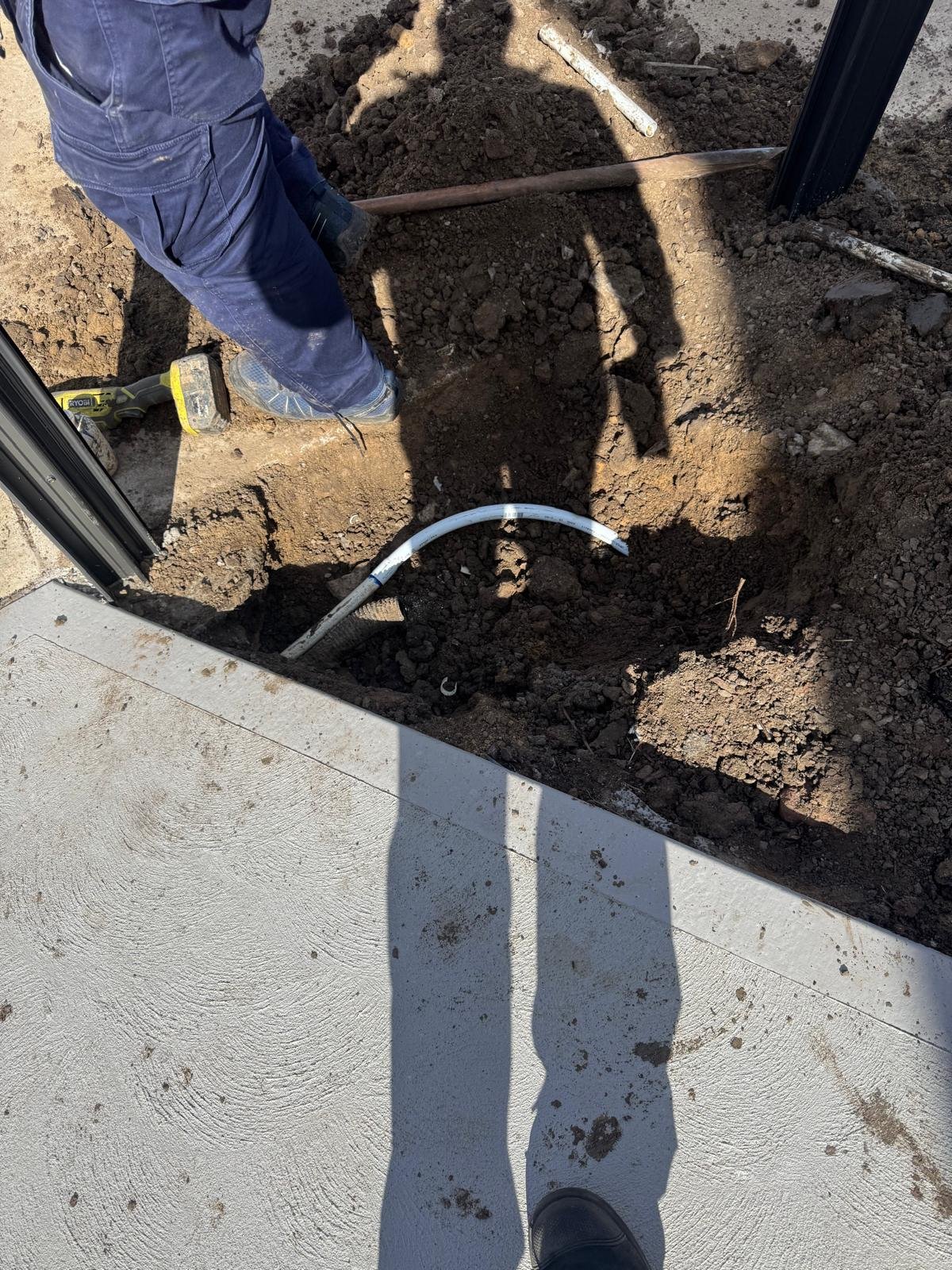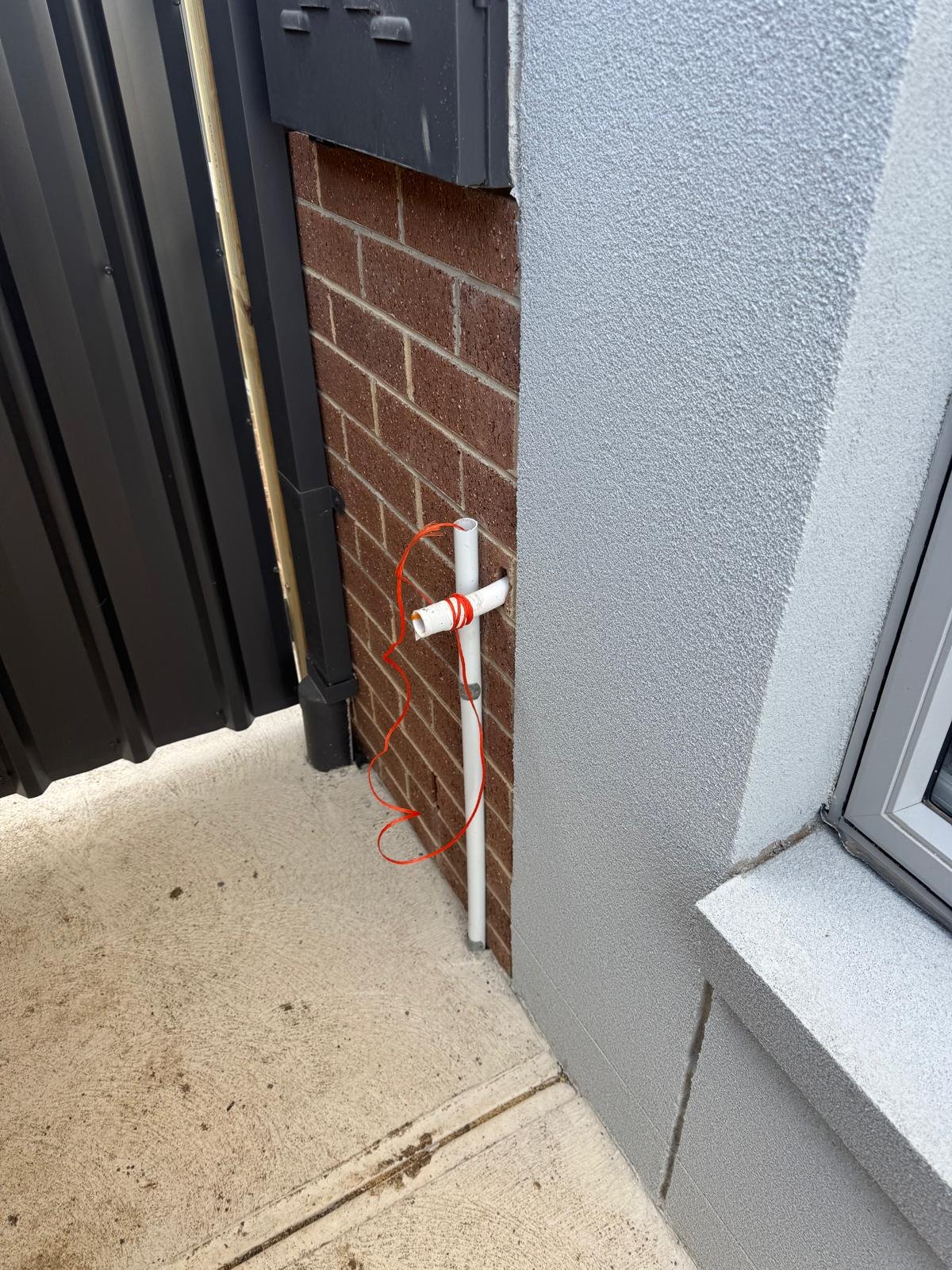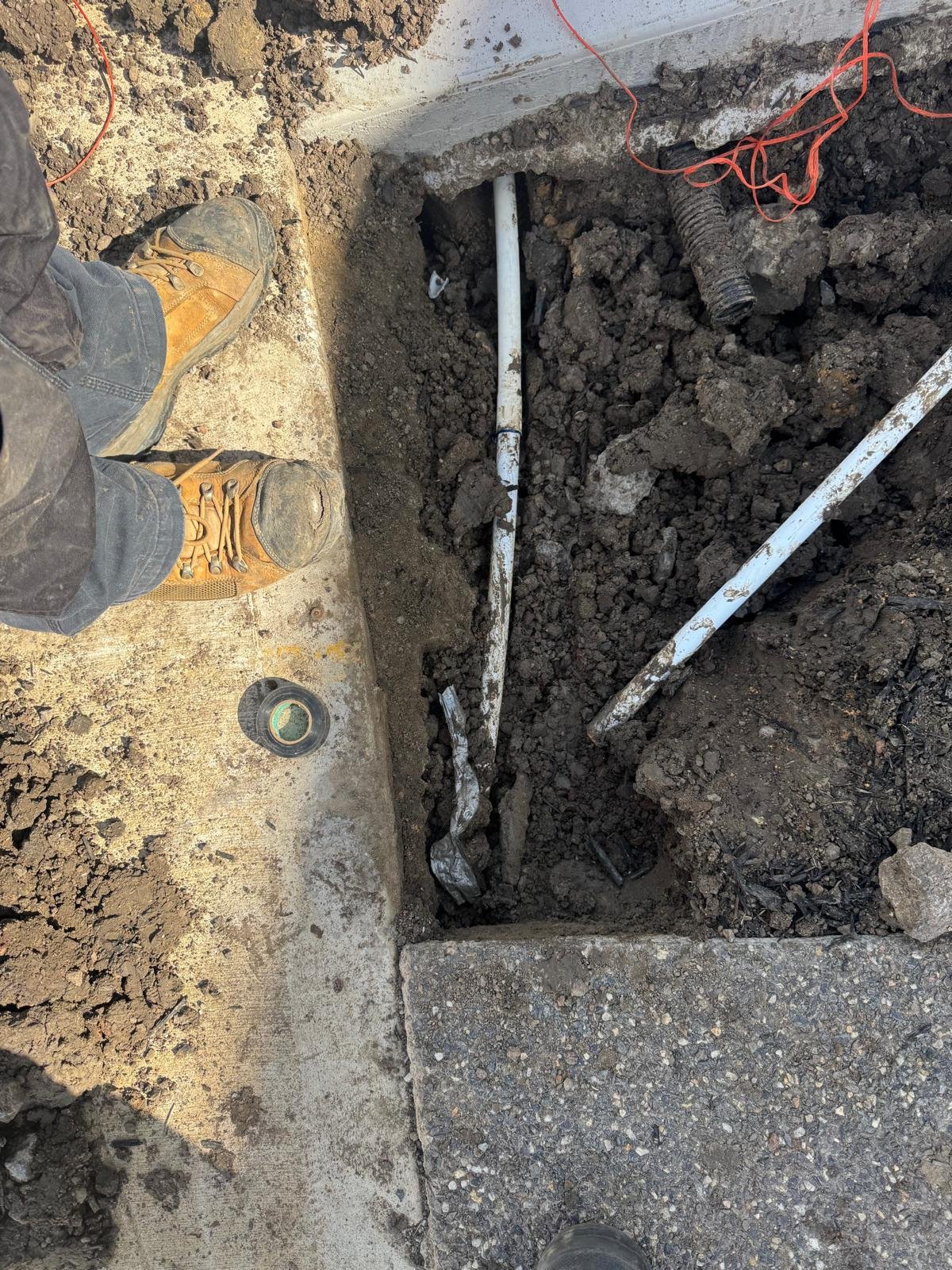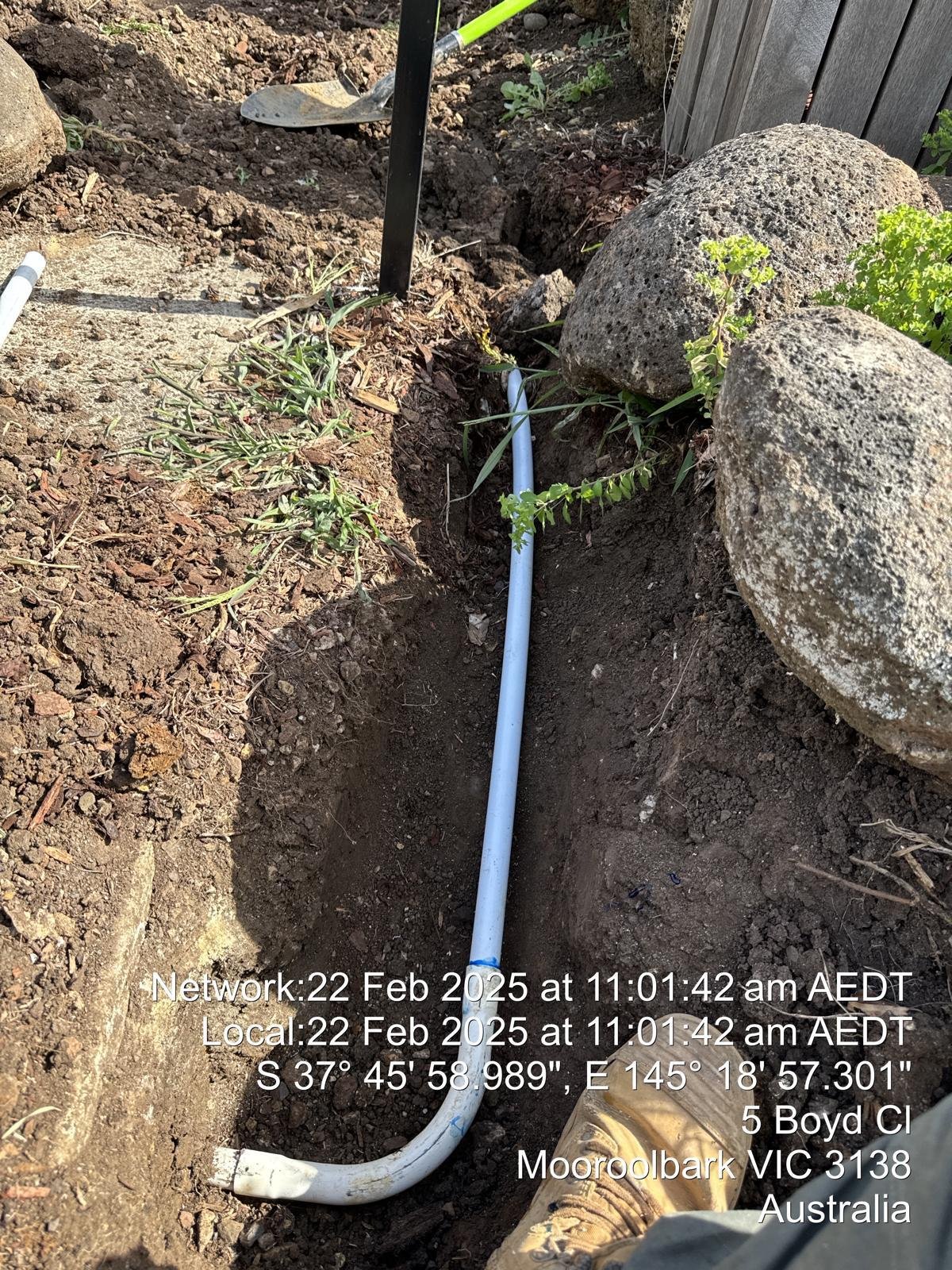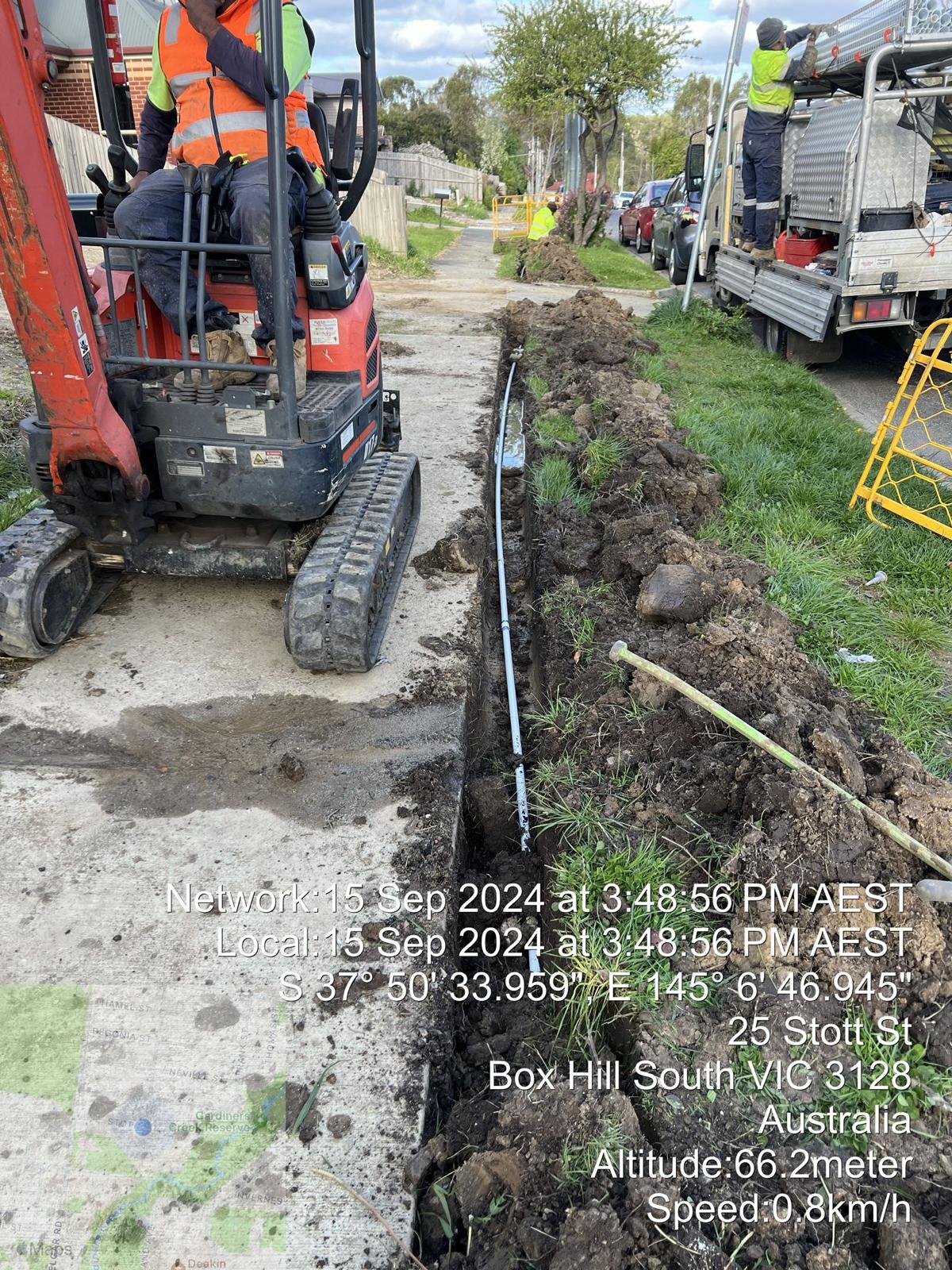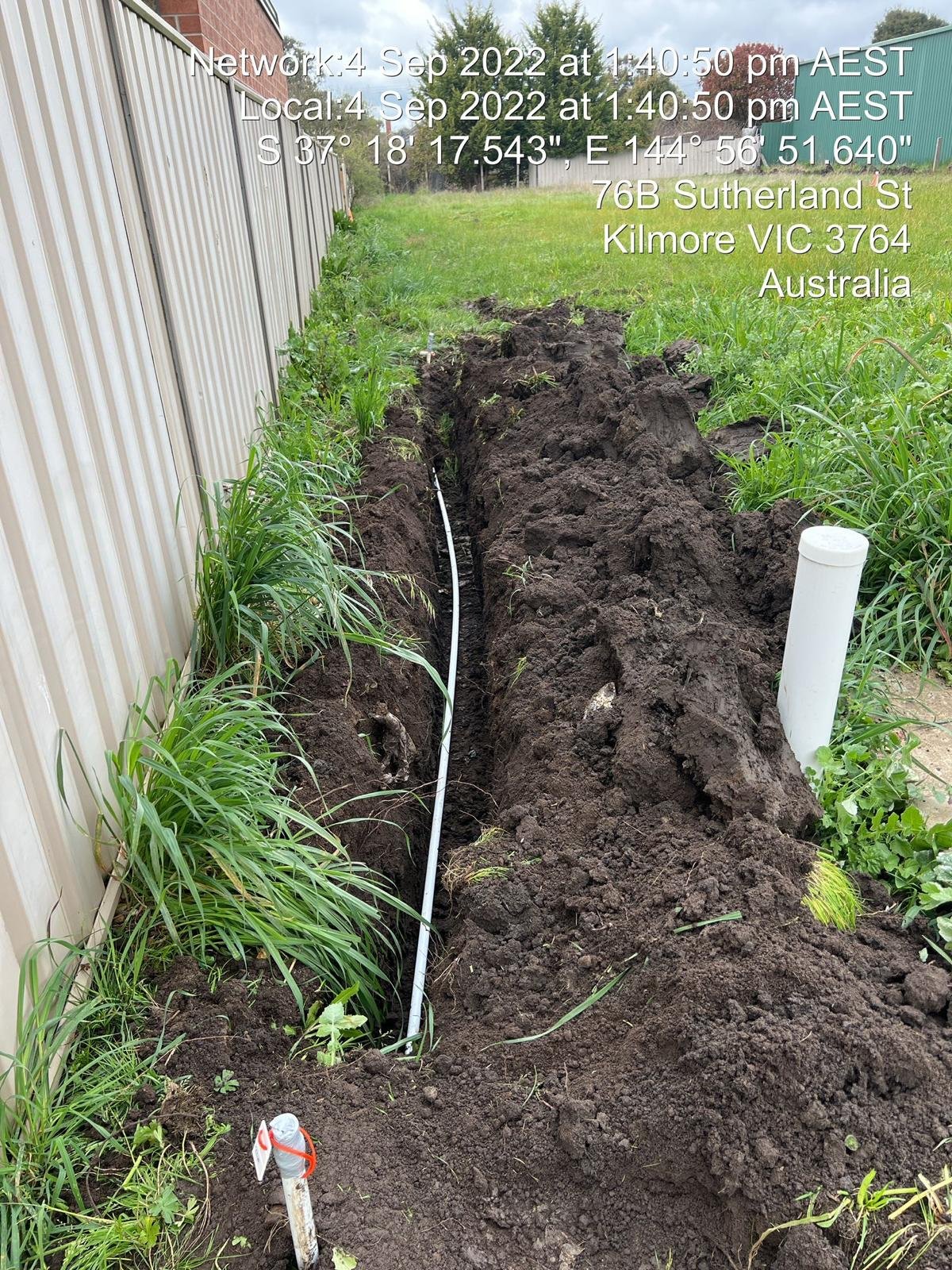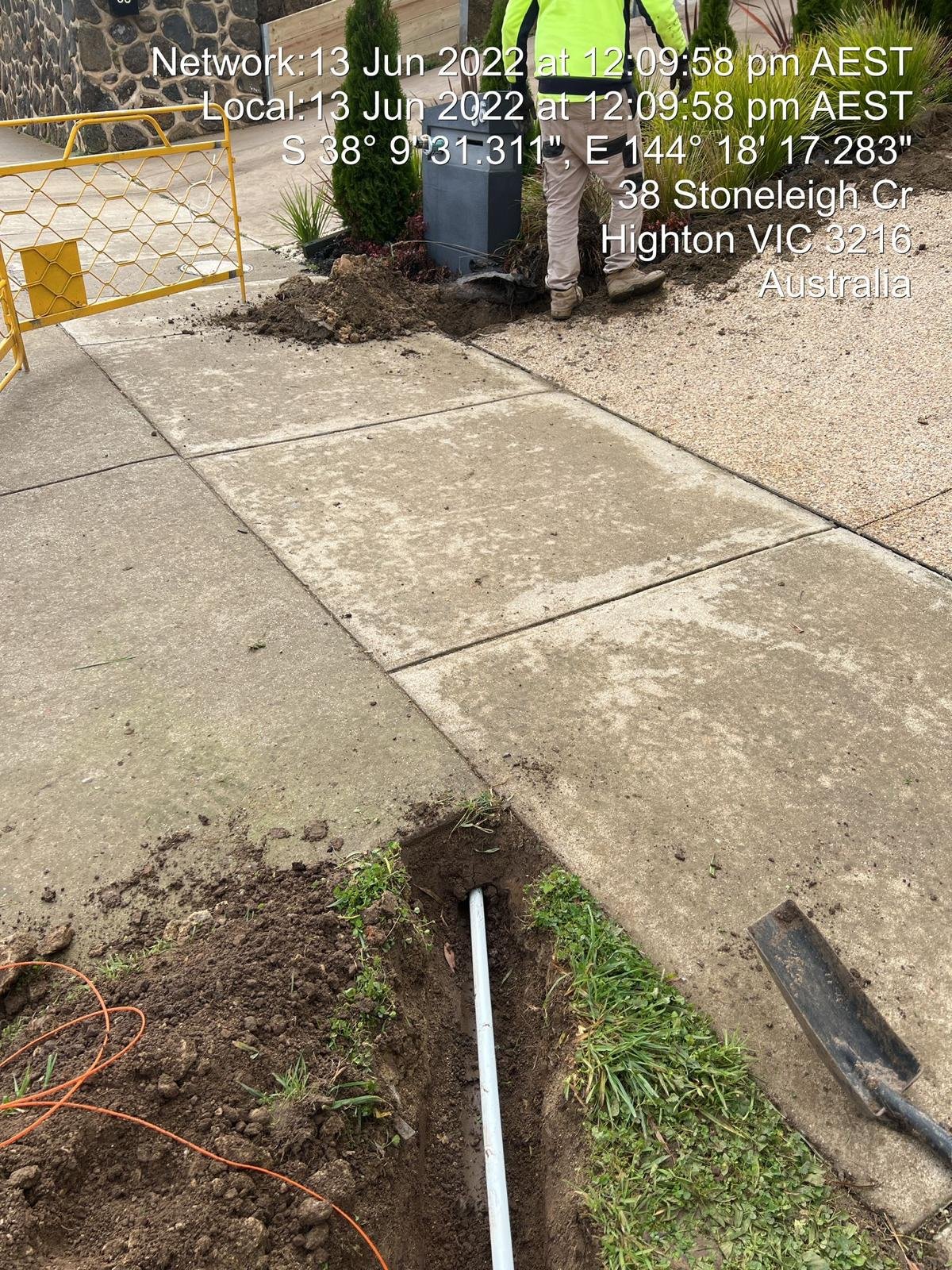Introduction
nbn requires you, the property developer, builder or customer as appropriate, to provide a suitable trench (“the
trench”) for the installation of nbn™ lead-in cabling between the nbn™ property entry point and the building
entry point.
You are required to ensure that the trench is constructed and reinstated (together with any termite barriers and
other building elements) in accordance with all relevant laws and regulations (which may vary between States
and Territories).
For new building construction, nbn recommends the use of a trench provided for, or to be shared with, another
service (e.g. the electrical mains power).
For established premises, you must keep the trench well away from any other existing underground services for
safety reasons and to avoid damaging the other services.
Safety
The trench should be dug by an experienced person who is familiar with underground service arrangements and
who is suitably accredited or licensed where required by the relevant authority. Careless excavation work may
result in personal injury (e.g. through contact with live underground power cables) or costly damage to
underground conduits, pipes and cables. Be aware that nbn may seek to recover its entire repair and associated
costs in the event that any damage is caused to nbn’s assets
In order to avoid personal injury or damage to property, existing underground services should be located and
identified by an experienced or suitably accredited or licensed person.
Methods for locating underground services include:
Dial before You Dig (DBYD) “free call service”, by telephoning 1100 or by visiting the DBYD website at
For information about any underground services that may be in the vicinity (note that while plans supplied by
DBYD may contain information about underground services on public or adjoining land, you are not required to
dig the trench outside the boundary of your premises, e.g. in public footways, roadways or in neighbouring
premises).
Review property documentation (e.g. building plans, electrical specifications, and plumbing plan).
Visually inspect the site noting the location of conduits, pipes or cables emerging from the ground at buildings,
sheds, swimming pools, fountains, electric barbecues, garden lights, external power outlets, etc.
Visually inspect the footway and verge for the location of any power, water, gas, sanitation, stormwater, drainage
or telecommunications facilities (e.g. pedestals, pits, poles, meters, markers, drains, conduits/pipes, cables).
Ascertain the likely path of underground services using the above indicators.
Verify the location of services using a cable locator or similar equipment, if available (note that existing services
may not have been installed in a straight line).
Verify the presence or absence of underground services at appropriate points along the chosen trenching route
by careful hand digging Where there is evidence of underground services along the chosen trench route but their position cannot be
verified with reasonable accuracy, look for a more suitable route or excavate by careful hand digging where
uncertainty exists.
On the other hand, we denounce with righteous indignation and dislike men who are so beguiled and demoralized by the rms of pleasure of the moment, so blinded by desire, that they cannot foresee the pain and trouble that are bound to ensue; and equal blame belongs to those who fail in their duty through weakness of will, which is the same as saying through shrinking from toil and pain. These cases are perfectly simple and easy to distinguish. In a free hour, when our power of choice is melled and when nothing prevents our being able to do what we like best, every pleasure is to be welcomed and every pain avoided. But in certain circumstances and owing to the claims of duty or the obligations of business it will frequently occur that easures have to be repudiated and principle of ion: he rejects pleasures to secure other grendures.
Sed ut perspiciatis unde omnis iste natus error sit voluptatem accusantium doloremque laudantium, totam rem aperiam, eaque ipsa quae ab illo inventore veritatis et quasi architecto beatae vitae dicta sunt explicabo. Nemo enim ipsam voluptatem quia voluptas sit aspernatur aut odit aut fugit, sed quia consequuntur magni dolores eos qui ratione voluptatem sequi nesciunt. Neque porro quisquam est, qui dolorem ipsum quia dolor sit amet, consectetur, adipisci velit, sed quia non numquam eius modi tempora incidunt ut labore et dolore magnam aliquam quaerat voluptatem. Ut enim ad minima veniam, quis nostrum exercitationem ullam corporis suscipit laboriosam, nisi ut aliquid ex ea commodi consequatur.

